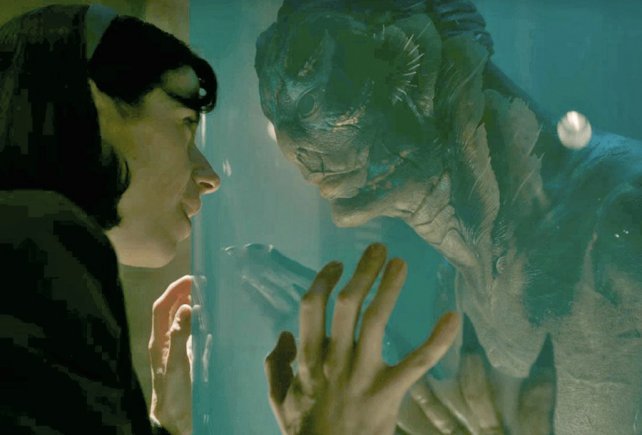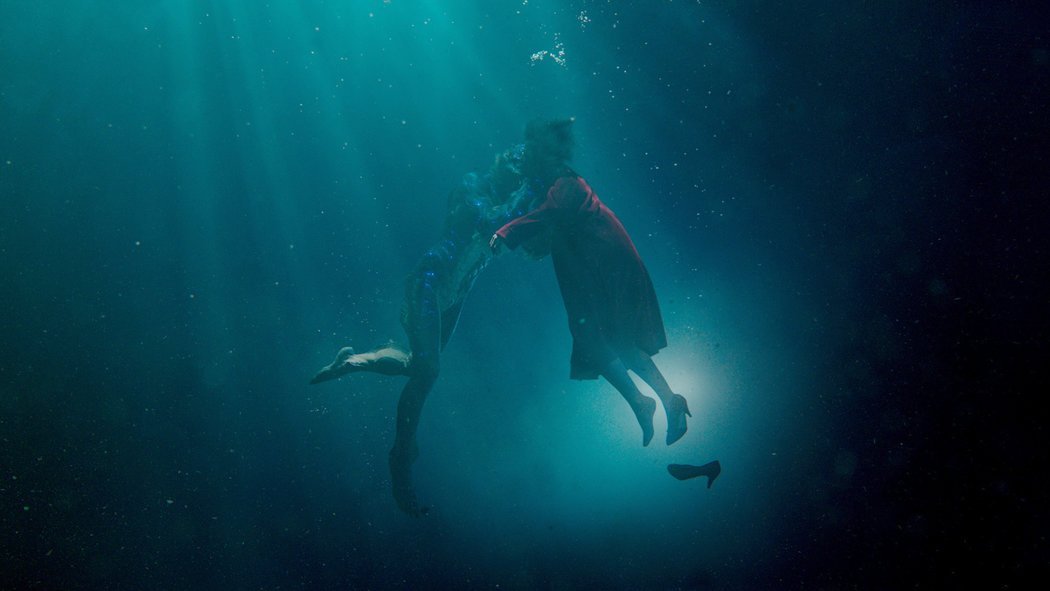Hi friends steemians... The Óscar gala is the event of the year in the cinematographic world and, in 2018, La forma del agua has been one of the main protagonists. Mexican filmmaker Guillermo del Toro is known for his particular way of intermingling fantasy and reality, fascinated since his childhood by monsters, has always tried to involve us in a poetic fantasy in which appearances deceive.
Thanks to its marked aesthetics, it manages to captivate us visually and, in the case of La forma del agua, not only remains in the visual and aesthetic, but goes further and accompanies its peculiar fantasy of a love speech towards otherness. A discourse that is very necessary today and that invites us to embrace differences and challenge social barriers.
The shape of the water is a kind of contemporary Beauty and Beast, updated and improved. The Beast does not have to become human and Beauty is not a princess. Despite being a fantasy movie, Del Toro brings a great verisimilitude, moving us to the 60s and introducing us to very real and close characters. That way of mixing fantasy with reality, of achieving that we faithfully create what we are seeing, the magic transmitted by the scenes and the music make the form of water the essential film of this 2018.

The otherness in The form of water
History seems to have always rewarded white, western, strong and powerful men; everything else was relegated to a lower plane. Women, homosexuals, immigrants, blacks ... all of them have been overshadowed and their struggle for equal rights has been late (and still is). Guillermo del Toro defines himself as part of that otherness, a Mexican resident in the United States, no matter how good a filmmaker he is, he can not get rid of that immigrant label.
In addition, since childhood, has been considered a peculiar person, different, fascinated by fantasy and a great imagination, something that has taken him to the top in the world of cinema. The cinema can erase barriers (or make them stronger), it has the power to change the world, to direct a political discourse in a friendly tone to society. Guillermo del Toro with La forma del agua pays homage to otherness, embraces differences and breaks down barriers.

The film begins by introducing us to a woman who lives alone in the 60s and who, despite her loneliness, seems happy and every morning starts her routine before going to work: she prepares food, cleans her shoes and masturbates in the bathtub . A completely normal woman and scenes loaded with a great naturalism that contrasts with the fantasy of the film. This woman, called Eliza, is mute and orphan, but this has not prevented her from achieving her independence. Eliza works cleaning in a secret government laboratory, there, befriends a fellow African-American woman named Zelda.
Both women represent the lowest in the hierarchy of the laboratory, are women and, in addition, "clean shit." White and powerful men will be those who occupy the highest echelon, they are seen as insignificant; In addition, Eliza is mute and African-American Zelda, something that will not improve her situation. Next to them, we find Eliza's friend, Giles, an old gay artist who lives with his cats. These three characters are the reflection of otherness and, throughout the film, we will see very uncomfortable and difficult situations that they will have to face: racism, homophobia, machismo ...

In the middle of the Cold War and at the height of the conquest of space, the laboratory arrives at a strange being that has been captured in the Amazon, a place where it was venerated and treated as a deity. This being has characteristics very similar to those of the human being, however, it is an amphibian. Eliza will discover it and feel a certain weakness for the creature; she is an incomplete human (she can not speak) and the strange creature observes her without prejudice, without noticing that she is unable to speak. A very special connection emerges between them.
This strange being will be in the crosshairs of Russians and Americans, will be mistreated and will want to kill him for further study. On the other hand, Eliza, along with her friends and a Russian spy who works in the laboratory, will do everything possible to save him. In this case, the heroes will be the otherness and the powerful the real monsters, a political discourse in the middle of a fantasy world. But not only do we find otherness in the more realistic characters, but also in the amphibious man, who will be the extreme of otherness within otherness, a unique being, different and, as a consequence, tortured.

The shape of love
The chromatic range chosen for the film brings us closer to the aquatic world, the cold colors, green and blue tones are constant, from the stage to the clothing, everything revolves around the water. The title itself is curious, because water has no form, and the same happens with love. Del Toro has explained on more than one occasion that the title is an allusion to love, to a love that does not understand forms or barriers.
Del Toro has also recognized that the film is a thorn that had been stuck since childhood when he saw The Monster of the Black Lagoon, a film with a similar plot, but in which the monster and the girl did not end up together. Del Toro considered this an error, because he was very identified with the monster, with that strange and different being that generates rejection for most mortals. For him, this kind of love stories must be consummated, they must show that love does not understand barriers and that anyone can fall in love and enjoy their love fully.
Thus, the form of water, where the beast does not need to humanize or become a prince to enjoy his beloved and, at the same time, the woman does not belong to royalty or is an unattainable being of extraordinary beauty, is a woman who fights and who fends for herself.

The monsters in The shape of water
Despite the appearances, the most monstrous character in the film is found in Colonel Richard, the man who captured the "monster". A powerful, ambitious character who despises anyone who is not like him.
There is a very significant moment in which he talks to Zelda about the monster and dares to say that "God created us in his image and likeness", in reference to the fact that the "monster" does not deserve any kind of respect, but also He rectifies and says that God looks more like him than Zelda and, without saying it explicitly, we see in him a completely racist attitude, making it clear that God must resemble a white man very much.
His abuse of power also leads him to despise the woman, to reify her, we see sexual harassment towards Eliza and also a relationship of absolute domination with his own wife. Richard's hierarchy is very clear, first the white men, then the women, and finally, everything else. Who is the real monster?
The shape of the water leaves us with a hopeful feeling, very far from other film's most tragic films. Guillermo del Toro invites us to leave prejudices aside, to enjoy this fantasy that supposes a song of love towards otherness, towards the different, something more than necessary in our days.



